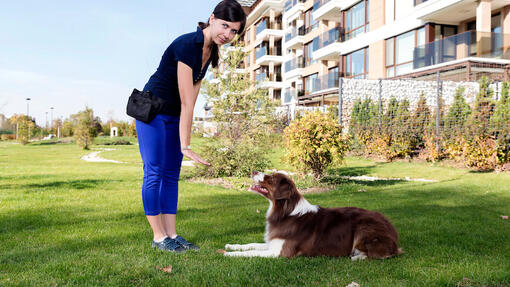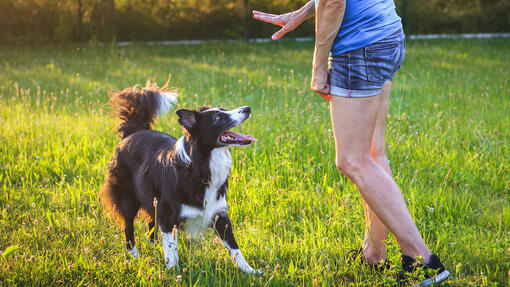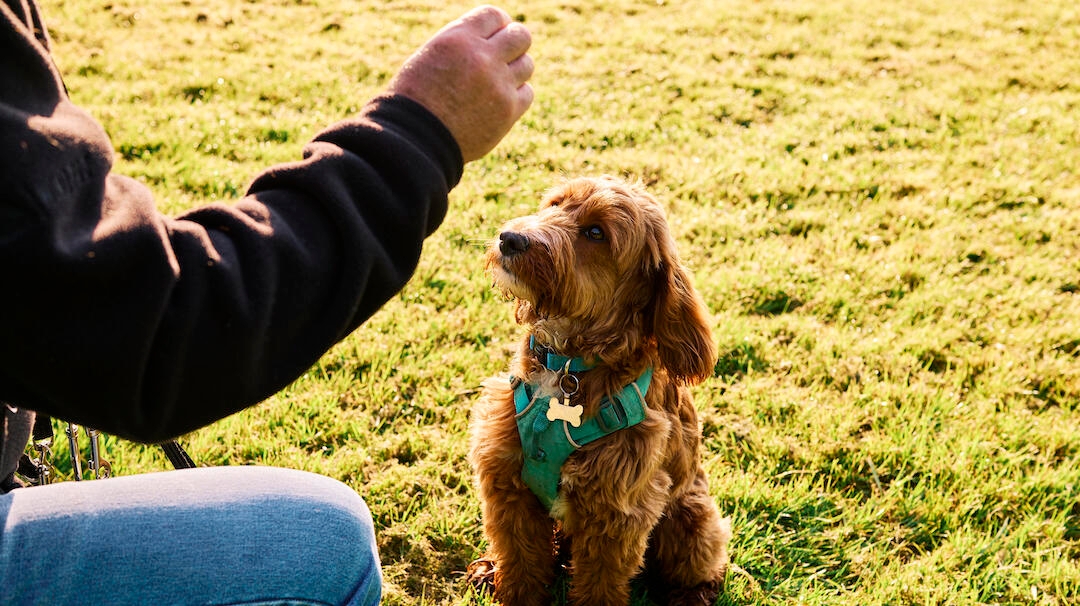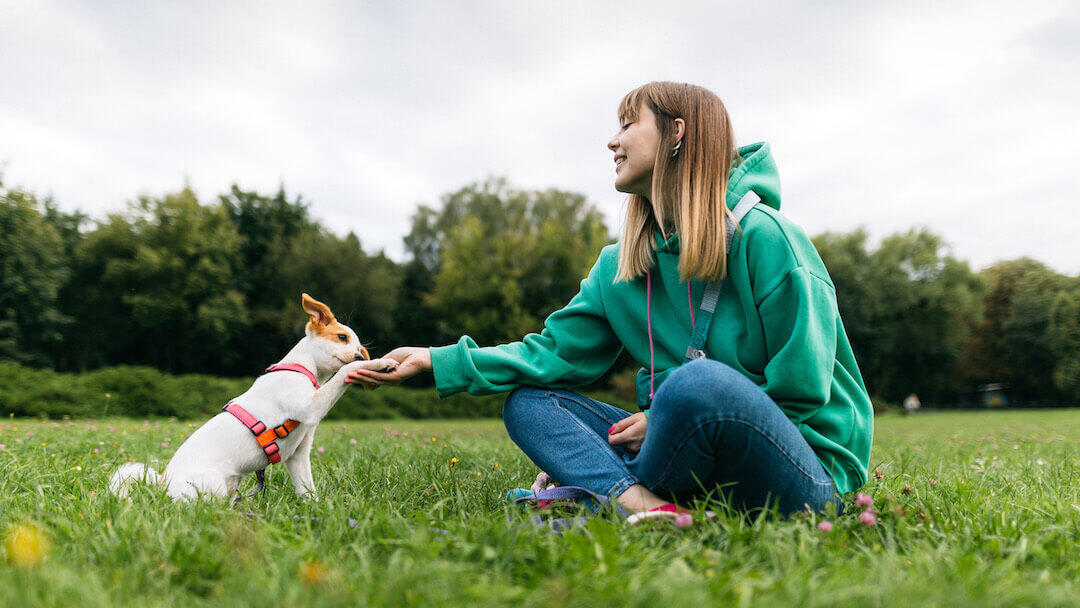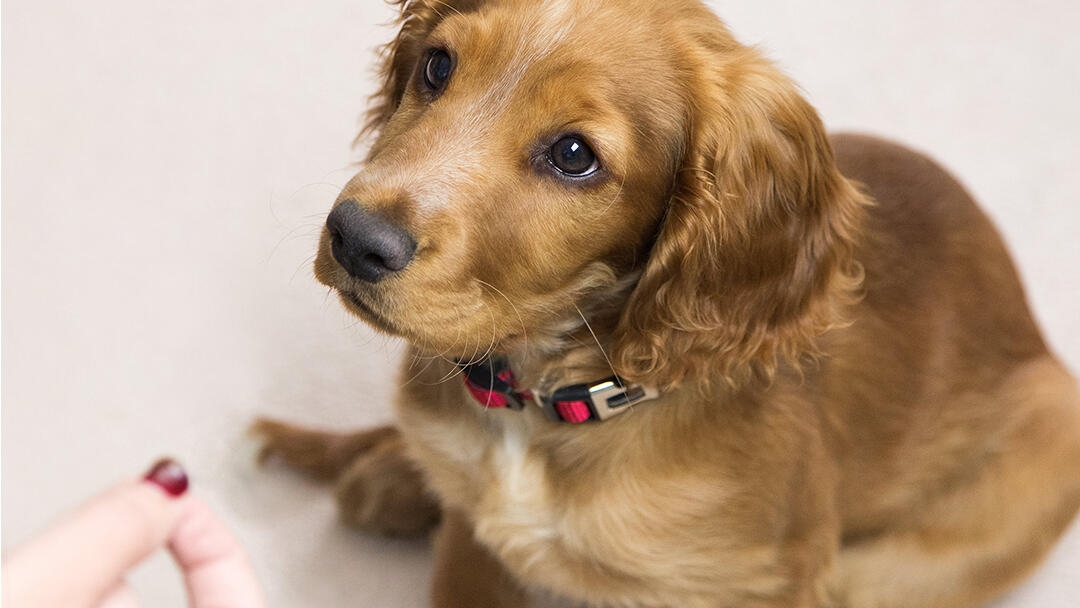
Teaching your canine pal some cool new tricks is a fantastic way to bond and have fun together. And what better trick to teach your pup than the impressive spin? Not only is this a fun party trick guaranteed to impress your friends, but it can also help improve your dog’s balance, agility, and coordination. It’s also a good exercise to raise your dog’s energy levels before strutting their stuff in the show ring. So, if you want to learn how to teach a dog to spin, we’ve got you covered!
Read on to find out how to turn your pup into a pro ‘spinner’ by following some simple tips and tricks. Just grab a few tasty treats, clear the space on a carpeted floor or on some grass, and get ready to have a bit of fun with your furry friend!
What you need
- Treats – Positive reinforcement is key when teaching your dog tricks. Use small, soft, and tasty treats to both show them what you want and as a reward when they get it right – or begin to understand what you want them to do. Treats should be healthy, dog-appropriate and tiny – the size of half your little fingernail is enough – and will stop your dog getting full or gaining too much weight! You will find it useful to have a treat pouch to keep them in while you are training.
- A quiet space with no distractions – Choose a room or a fenced-in outdoor space to practice. Make sure there are no distractions like other animals, people, interesting sights, sounds or smells – or anything that could interrupt your training.
- Time and patience – Learning new tricks can sometimes take time so patience and enthusiasm is vital. This is a fun thing to do with your dog so make sure you’re both enjoying it.
How to teach a dog to spin in 12 easy steps
- This is one of those tricks that needs a smelly treat your dog loves – as they are going to be following that so you can show them what you want them to do.
- Your dog can be in any position you want to start with so find out what is easiest for you (bearing in mind you are going to be luring your dog round in a circle) and that doesn’t have you leaning over your dog (which could either be intimidating for them, or else it puts your face in the way if they get excited and jump up!). If you have a small dog, you can kneel down.
- Start practising with them on either your left or right side facing forwards.
- Once you are comfortable, get your dog interested in the treat and hold it close to the end of their nose so they can smell it.
- Start to slowly move your hand round in a circle so your dog follows the treat. Don’t raise your hand – keep it on nose height. If they are at the side of you, move it out away from your leg (so clockwise if they are on your right, anti-clockwise if on your left).
- Some dogs can easily follow the treat in a full circle – others might be stiffer or just get confused what you want.
- If your dog manages a full circle, say “good” (or whatever your reward word/signal is) and give the treat. If your dog struggles to do a full circle, reward after half a circle – you can always build it up when they start to get the hang of following the treat.
- Practise this till your dog is happily spinning round in a circle after the treat with no hesitation.
- Do this in both directions so your dog doesn’t get ‘one sided’.
- Once you are 100% confident your dog will follow the treat, you can add a cue word. Have a different one for each different direction (“spin” and “twist” can work). Introduce this as your dog is doing the action (not before yet – you need to link the word to the action).
- Now you can start to lose the treat. Have your dog in exactly the same position and use exactly the same hand signal along with your cue word – but without a treat in your hand. As soon as they do one circle, say “good” and reward them with a treat from your treat pouch.
- Now it is just a matter of practise. As your dog really gets to grips with this, you can make your hand signal smaller and smaller – until it is just a movement of your finger.
What to avoid when training your dog
When teaching your dog to spin, it’s a good idea to avoid certain mistakes that can make the training experience frustrating for both you and your furry friend. Here are some of the most common:
Losing patience
While in our minds, it is a really simple exercise, our dogs have no idea what we want them to do. Some get it quickly, others take far longer. Keep it fun, enjoy the whole process – and if you can feel that you are losing patience, getting bored or that your dog looks confused, take a break and come back to it tomorrow.
Training for too long
The “spin” trick, in particular, can be quite high energy and might be working muscles that don’t always get used so don’t make the mistake of practicing for too long. It is far better to train in several short sessions than in one long one – which can so easily get boring and cause your dog can lose their focus or enthusiasm.
Rushing the process
Take things slowly, there’s no point in skipping steps or rushing through the training. Make sure your dog understands and is an expert in each step before you move on to the next one. By doing this, you will make sure your dog really understands what you are teaching them and that the lesson really ‘sticks’.
Not using enough rewards
Rewarding your dog for a job well done is key in making sure they enjoy their training and that the behaviour that you liked will be repeated. This is what positive reinforcement is all about. In contrast, if you don’t reward a dog when they get it right – especially in the early days of teaching an exercise – there is no incentive for them to repeat that behaviour. As well as rewarding them with tasty treats, make sure they know that you are happy with them too.
Being inconsistent
Remember that our dogs do not speak the same language as us – and they rely on watching our body language and linking actions to the cues we have taught them. If your dog hears and sees different things for every training session, they will find it hard to understand what you want from them.
Now that you know how to teach a dog to spin, all you have to do is enjoy showing off your pup’s impressive skills! Want to add more fun tricks to their repertoire? Check out this guide on How to teach a Dog to Roll Over next!



